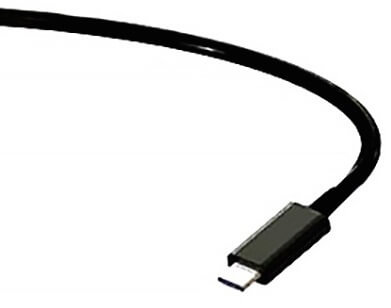TRUSTED EXPERTS
ANY DEVICE
Will USB-C Change the Connectivity and Data Transfer Game for Mac Users?

There’s a new kid in town in the connectivity game, and he’s focused on speed rather than convenience. In 2001, Intel and Apple co-developed the Thunderbolt connector, a fatter and faster pipeline for data transfer. But it never took off, other than for high-end applications. Instead, the ubiquitous USB connector just keeps getting better and better.
The latest incarnation of USB connectivity, USB-C, is compact, reversible (and we hear choirs of techie angels sing!) and handles power, data transfers and display output on the new MacBook. In an article published on TheVerge.com, an Apple spokeperson says, “As long as we were going to include a port for charging the new MacBook, we wanted to make sure it was the most advanced and versatile one available.”
USB-C may also replace the Micro USB for charging smartphones. Imagine? One form of connectivity for all your devices, from the home to the car to the office. (And once again, the techie angels rejoice.)
USB-C has been in development for some time, and there was talk of an introduction last year, but the new MacBook represents the first time the data port has been available on a device for sale. This article on CNET explains the evolution of USB cables.
What This Means for Data Transfer and Data Back-ups
We can’t see a single downside to a new, enhanced, smaller and more convenient USB connector, other than the transition period when we’ll need to transfer data from devices with older USB ports to those with a USB-C. Adapters will be available – the first time a USB cable ever needed an adapter. Once older USB ports are fully phased out, we’re looking at one cable for everything, including power, and the next step toward a completely wireless experience.
External hard drives won’t require a separate power adapter, making data back-ups, even on the road, quick, easy, and convenient.
Helpful USB Tips to Avoid a Data Recovery Emergency
Following some “best practice” tips can help users of any device avoid data loss while using a USB-C cable.
– Make sure USB cables are in good condition, not frayed or damaged, to prevent loss of data during a transfer.
– On PCs, select “safely remove hardware” before unplugging a USB connected to an external hard drive to prevent data loss or data corruption.
– Make sure files have saved properly on the new device before deleting them off the old drive or device. If you lose data and don’t realize it until after the transfer, a data recovery service like 24 Hour Data may be able to retrieve the deleted files from the source device.
Start A Recovery
Get Started Below
Error: Contact form not found.
![]() WOW... fantastic customer experience! Submitted a totally dead 1TB drive for recovery yesterday now its fully recovered before noon the next day! Exceptional customer service, and impeccable reputation. Thank you 24 Hour Data, ever so much for getting my valuable data recovered and back to me. Very reasonable rates. My hat goes off to the BEST data recovery service in Dallas or in the country for that matter! You will not be disappointed using their services....
WOW... fantastic customer experience! Submitted a totally dead 1TB drive for recovery yesterday now its fully recovered before noon the next day! Exceptional customer service, and impeccable reputation. Thank you 24 Hour Data, ever so much for getting my valuable data recovered and back to me. Very reasonable rates. My hat goes off to the BEST data recovery service in Dallas or in the country for that matter! You will not be disappointed using their services....
Mark Davis
Bear Technologies











